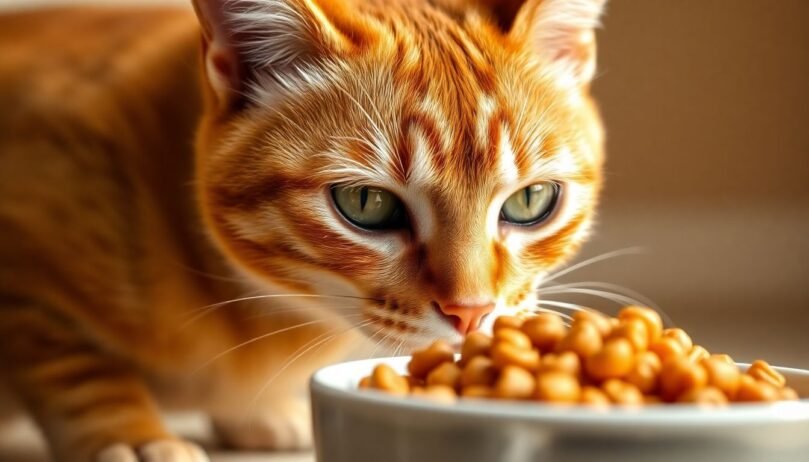How to Tell if a Cat Is Hungry
- 29 January 2025
- BuyAPet Editorial Team
- All Cats, Cat Health
How to Recognize Your Cat’s Hunger Cues: A Comprehensive Guide
Many cat parents see the same scene: a determined kitty meowing at dinner time. Are they truly hungry—or just asking for attention? This guide helps you decode hunger cues so your cat gets the nutrition they need.
Feeding plans
When to call the vet
Why Decoding Hunger Cues Matters
It can be tough to know when a cat is truly hungry. Misinformation is common—some assume any meow means hunger, others think cats always want food. Understanding your cat’s specific signals supports healthy weight and overall well-being.
Fun fact: Many owners report difficulty interpreting hunger cues—if that’s you, you’re not alone.
Behavioral Signs Your Cat Is Hungry
Increased Meowing or Vocalization
Hunger-related meows can be sharper and more urgent, often clustered around mealtimes. If your cat hovers near the bowl or the food cupboard while vocalizing, hunger is likely.
Changes in Activity Levels
Restlessness—pacing, following you into the kitchen, or counter-jumping near stored food—can signal “feed me” behavior.
Body Language Indicators
- Rubbing against your legs, leading you toward the feeding area
- Persistent eye contact then looking at the bowl
- Pawing at bowls or scratching at cupboard doors
Physical Signs of Hunger in Cats
Weight Loss or Body Condition Changes
A healthy cat keeps a stable weight. You should feel ribs with a light fat cover and see a defined waist from above. Sudden weight loss can indicate underfeeding or illness.
Changes in Appetite
Differentiate a small dip from a true refusal to eat. If your cat suddenly eats half their normal portion for more than a day, take note and investigate.
Understanding Your Cat’s Feeding Schedule
How Often to Feed
- Kittens: 3–4 small meals per day
- Adults: Typically 2 meals per day
- Seniors: Smaller, more frequent meals can help digestion
General guidance only—your vet can tailor a plan by life stage, weight, and health.
Portion Control & Food Type
- Adjust portions to body weight and activity level
- Choose complete, balanced diets that meet standards
- Ask a veterinary nutritionist for personalized advice
Environmental Factors
Stressors like moving, new pets, or illness can change appetite. Feed in a calm, consistent spot and monitor mood and routine.
When to Consult a Veterinarian
Sudden Eating Changes
Rapid increases or drops in appetite—especially with vomiting or diarrhea—warrant a checkup.
Persistent Weight Loss
If weight falls despite adequate feeding, schedule a visit. Underlying issues are easier to treat early.
Unresponsiveness to Food Cues
Ignoring food altogether, pawing at the mouth, or difficulty chewing may indicate dental disease or illness—seek veterinary care.
Conclusion: Decoding Your Cat’s Hunger Signals
Watch for vocal cues, restlessness, and body language alongside weight and appetite trends. Align meals and portions to life stage and environment, and involve your vet when things change suddenly.
Next step: Keep a simple food diary—note times, amounts, appetite, and behaviors. Patterns make decision-making easy.
